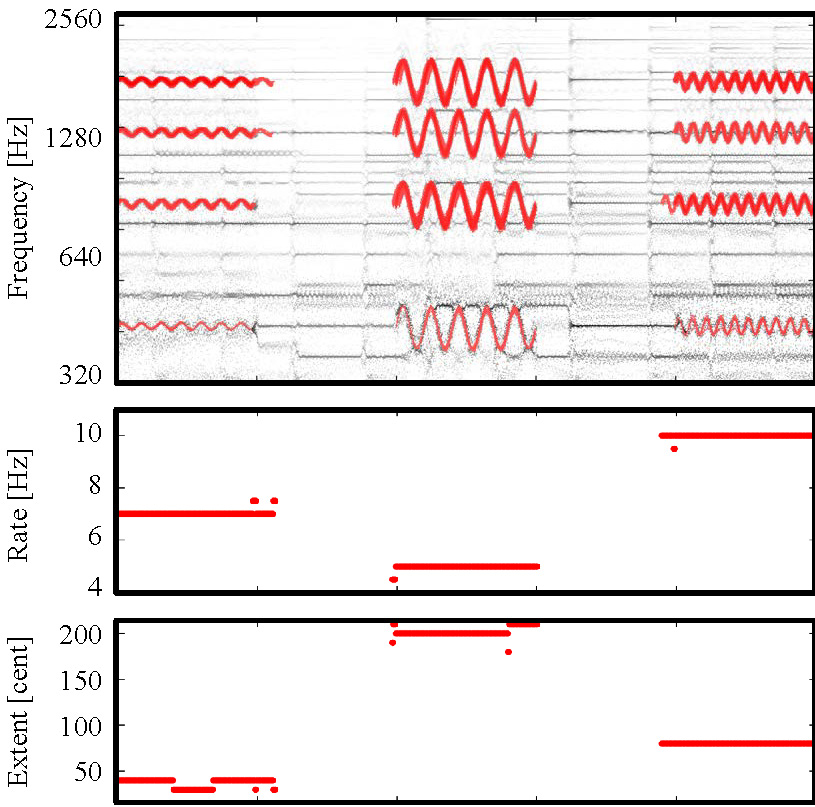Template-Based Vibrato Analysis of Music Signals
This is the accompanying website for the paper:
- Jonathan Driedger, Stefan Balke, Sebastian Ewert, and Meinard Müller
Template-Based Vibrato Analysis of Music Signals
In Proceedings of the International Society for Music Information Retrieval Conference (ISMIR): 239–245, 2016. PDF Demo@inproceedings{DriedgerBEM16_Vibrato_ISMIR, author = {Jonathan Driedger and Stefan Balke and Sebastian Ewert and Meinard M{\"u}ller}, title = {Template-Based Vibrato Analysis of Music Signals}, booktitle = {Proceedings of the International Society for Music Information Retrieval Conference ({ISMIR})}, address = {New York, USA}, year = {2016}, pages = {239--245}, url-pdf = {2016_DriedgerBEM_VibratoDetection_ISMIR_ePrint.pdf}, url-demo = {https://www.audiolabs-erlangen.de/resources/MIR/2016-ISMIR-Vibrato} }
Abstract

The automated analysis of vibrato in complex music signals is a highly challenging task. A common strategy is to proceed in a two-step fashion. First, a fundamental frequency (F0) trajectory for the musical voice that is likely to exhibit vibrato is estimated. In a second step, the trajectory is then analyzed with respect to periodic frequency modulations. As a major drawback, however, such a method cannot recover from errors made in the inherently difficult first step, which severely limits the performance during the second step. In this work, we present a novel vibrato analysis approach that avoids the first error-prone F0-estimation step. Our core idea is to perform the analysis directly on a signal's spectrogram representation where vibrato is evident in the form of characteristic spectro-temporal patterns. We detect and parameterize these patterns by locally comparing the spectrogram with a predefined set of vibrato templates. Our systematic experiments indicate that this approach is more robust than F0-based strategies.
Dataset
All audio files and annotations used in our paper: [.zip]
Evaluation: Vibrato Detection
Here you find all results of our vibrato detection experiment from Section 3.1.
Example: Sound On Sound Demo - Mystery
Click the button in the middle to activate the player.
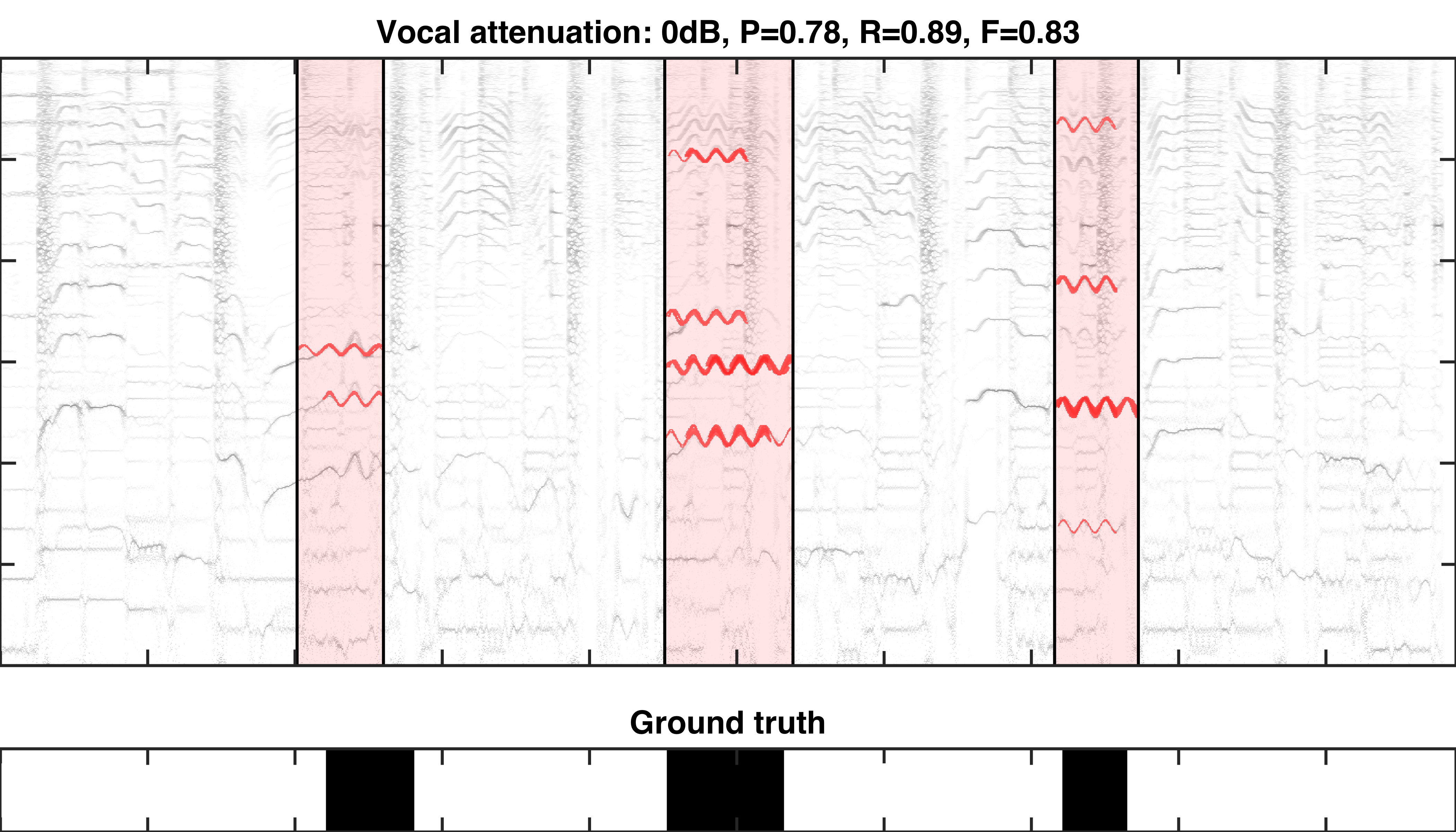
Example: Giselle - You
Click the button in the middle to activate the player.
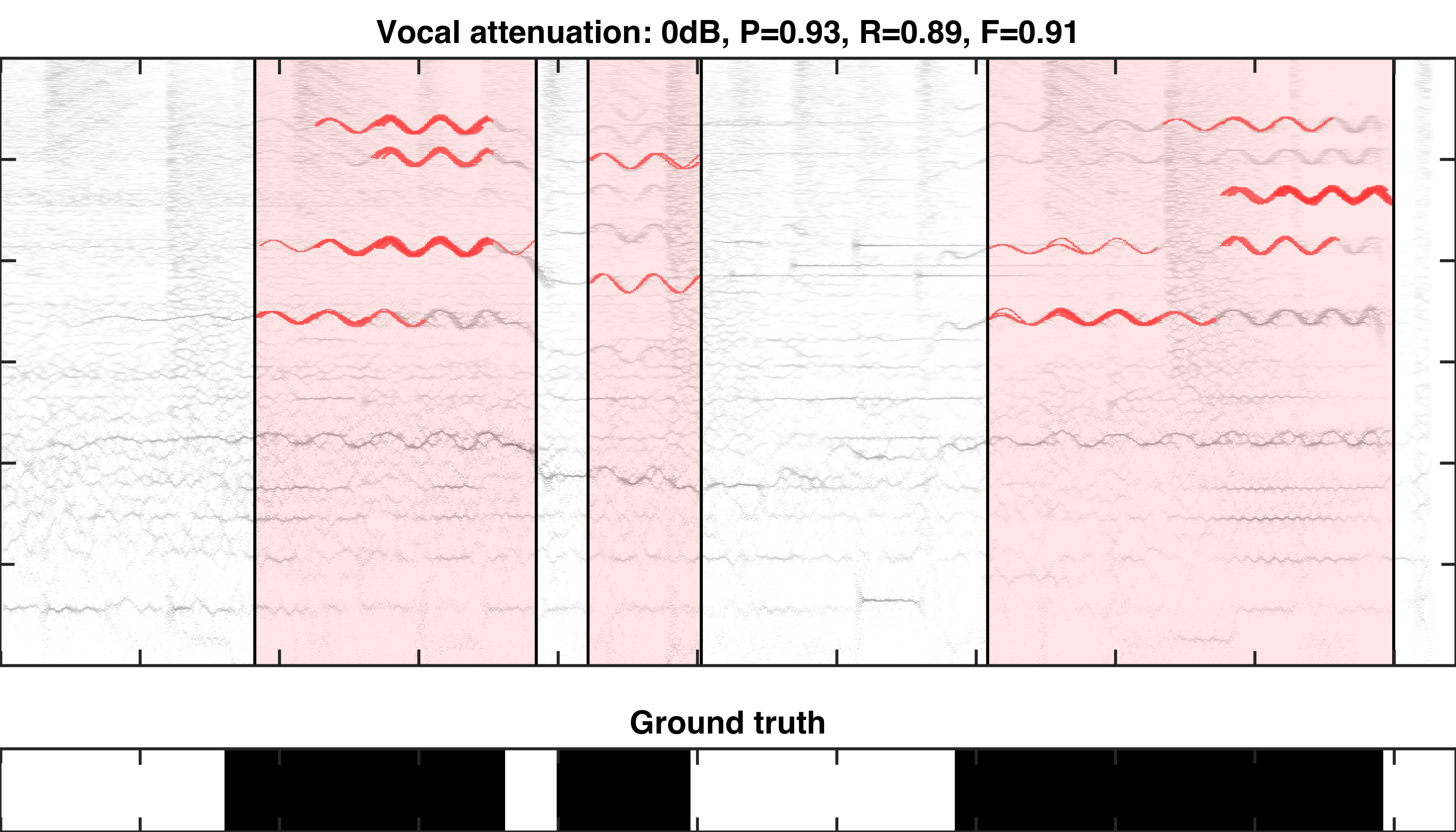
Example: Leaf - Full
Click the button in the middle to activate the player.
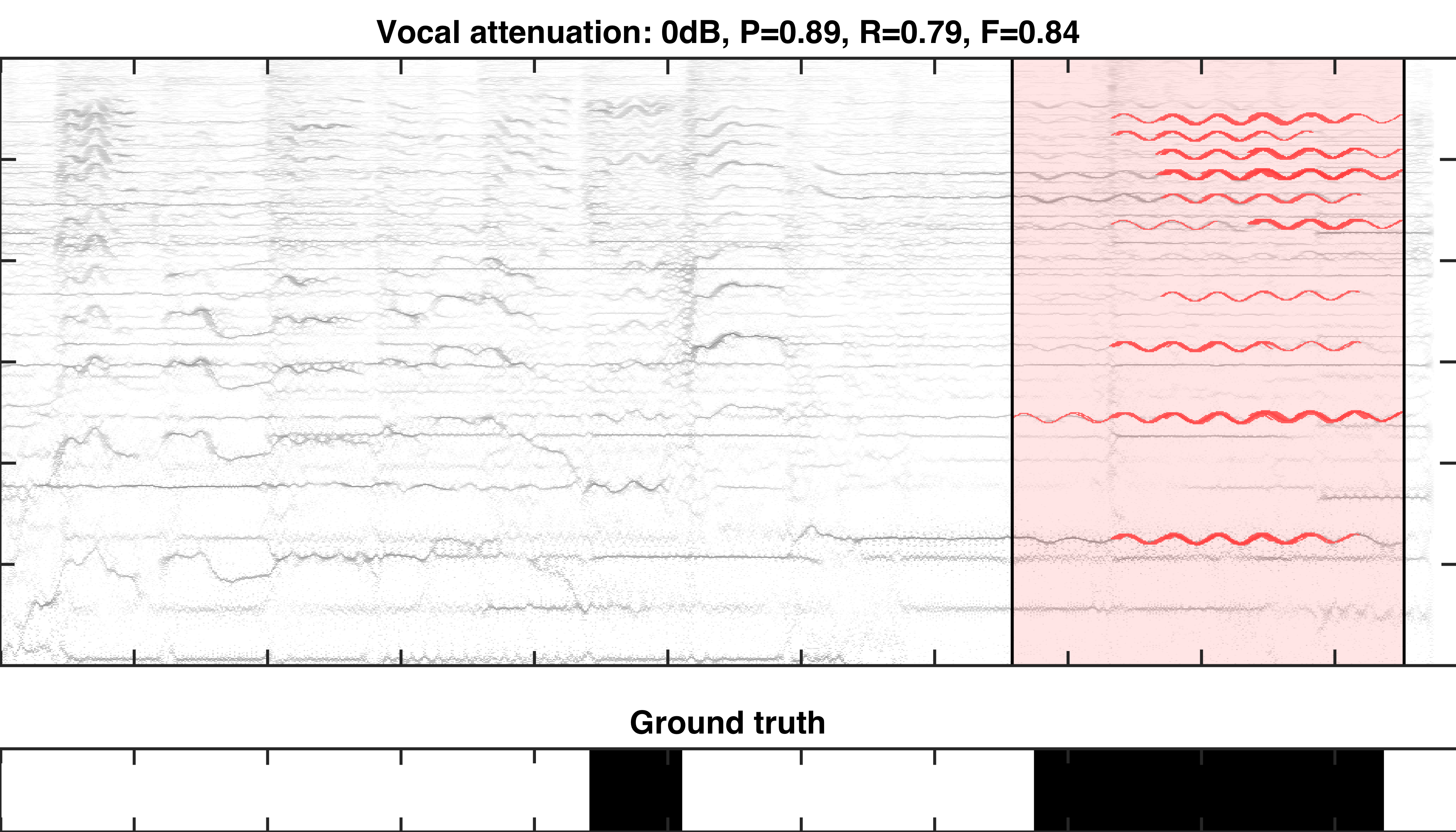
Example: Phre The Eon - Everybody is Falling Apart
Click the button in the middle to activate the player.

Example: Secretariat - Borderline
Click the button in the middle to activate the player.
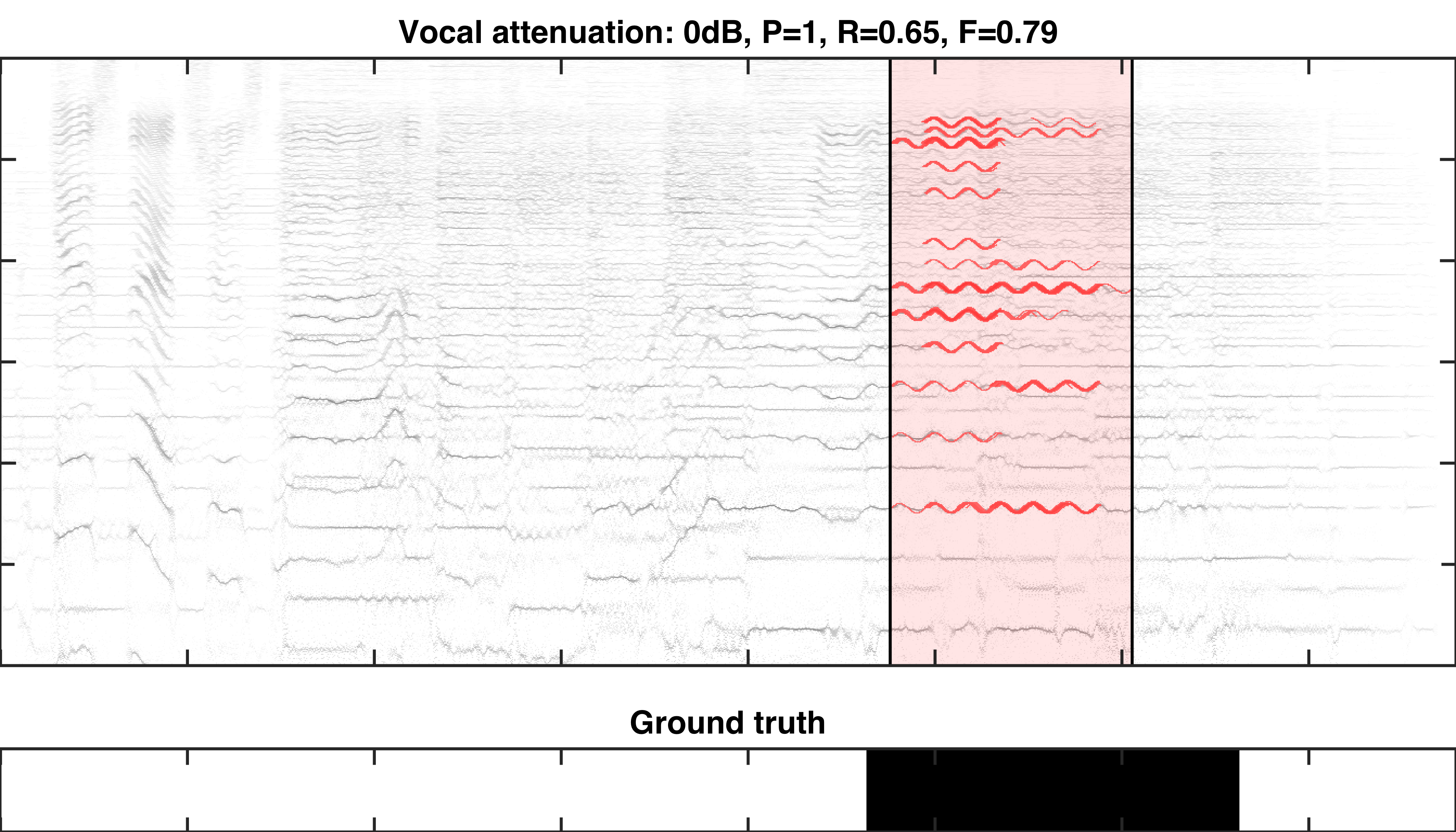
Example: Sunshine Garcia Band - For I Am The Moon
Click the button in the middle to activate the player.
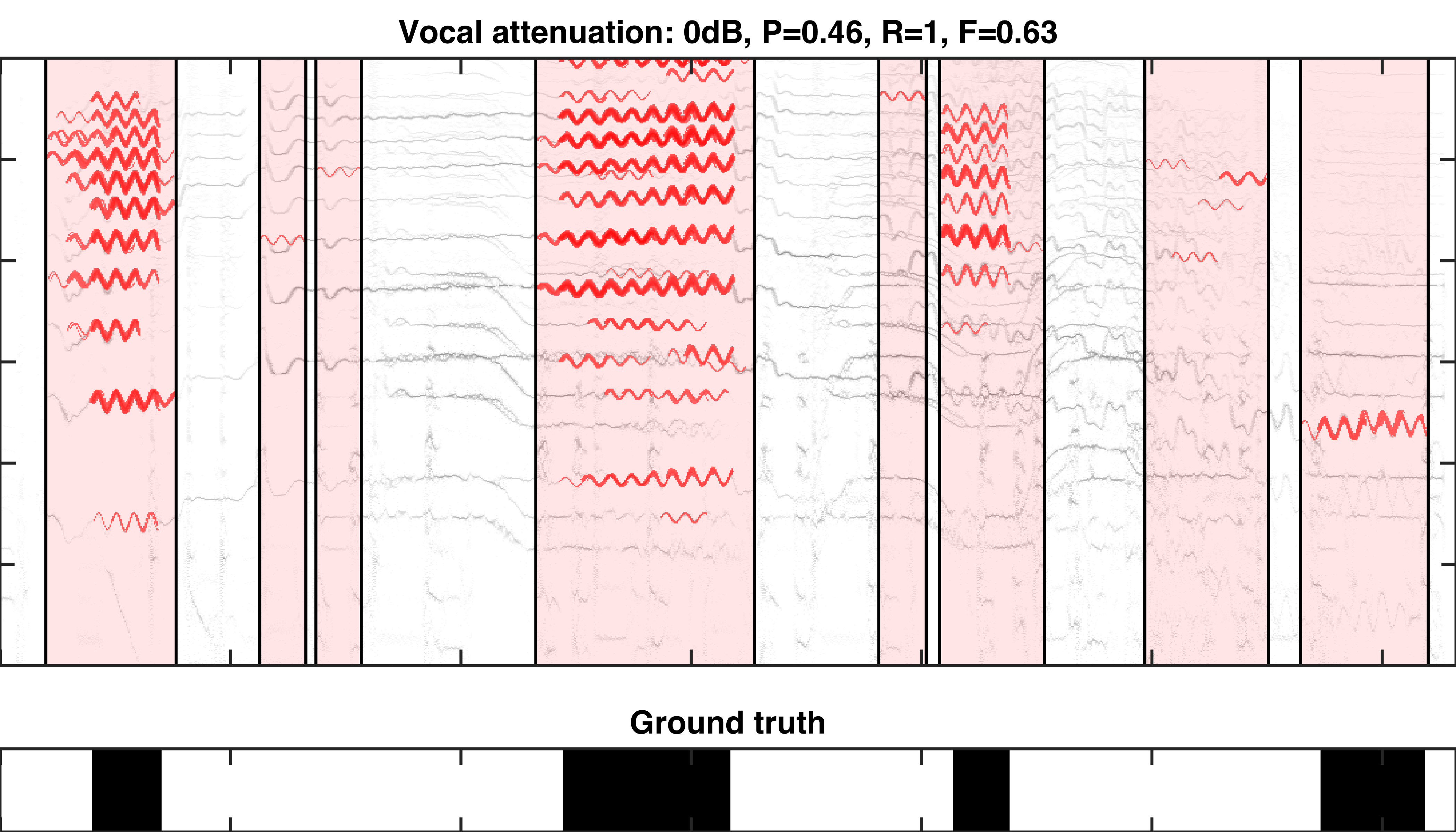
Example: Angela Thomas Wade - Milk Cow Blues
Click the button in the middle to activate the player.
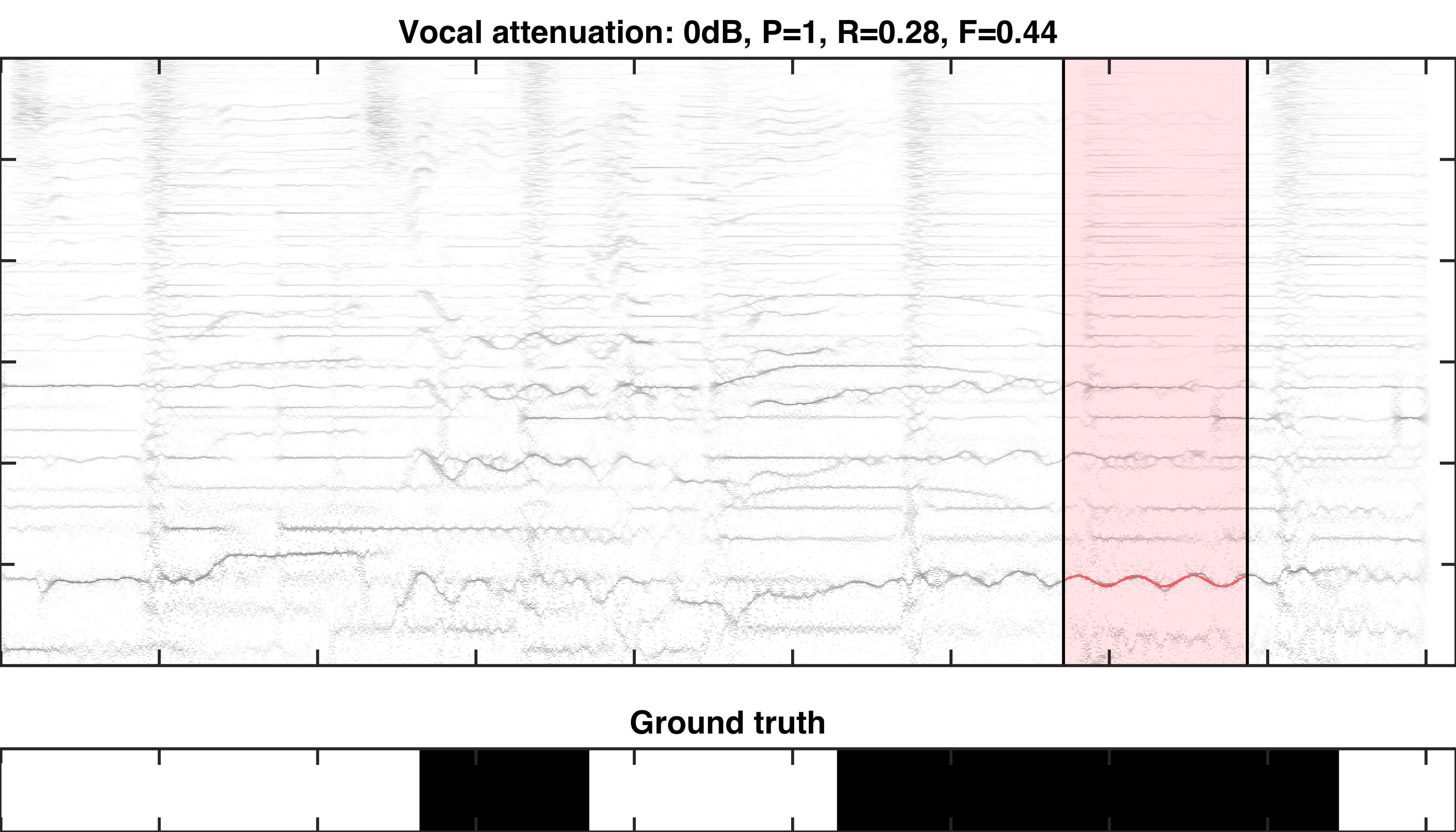
Example: Triviul - Dorothy
Click the button in the middle to activate the player.
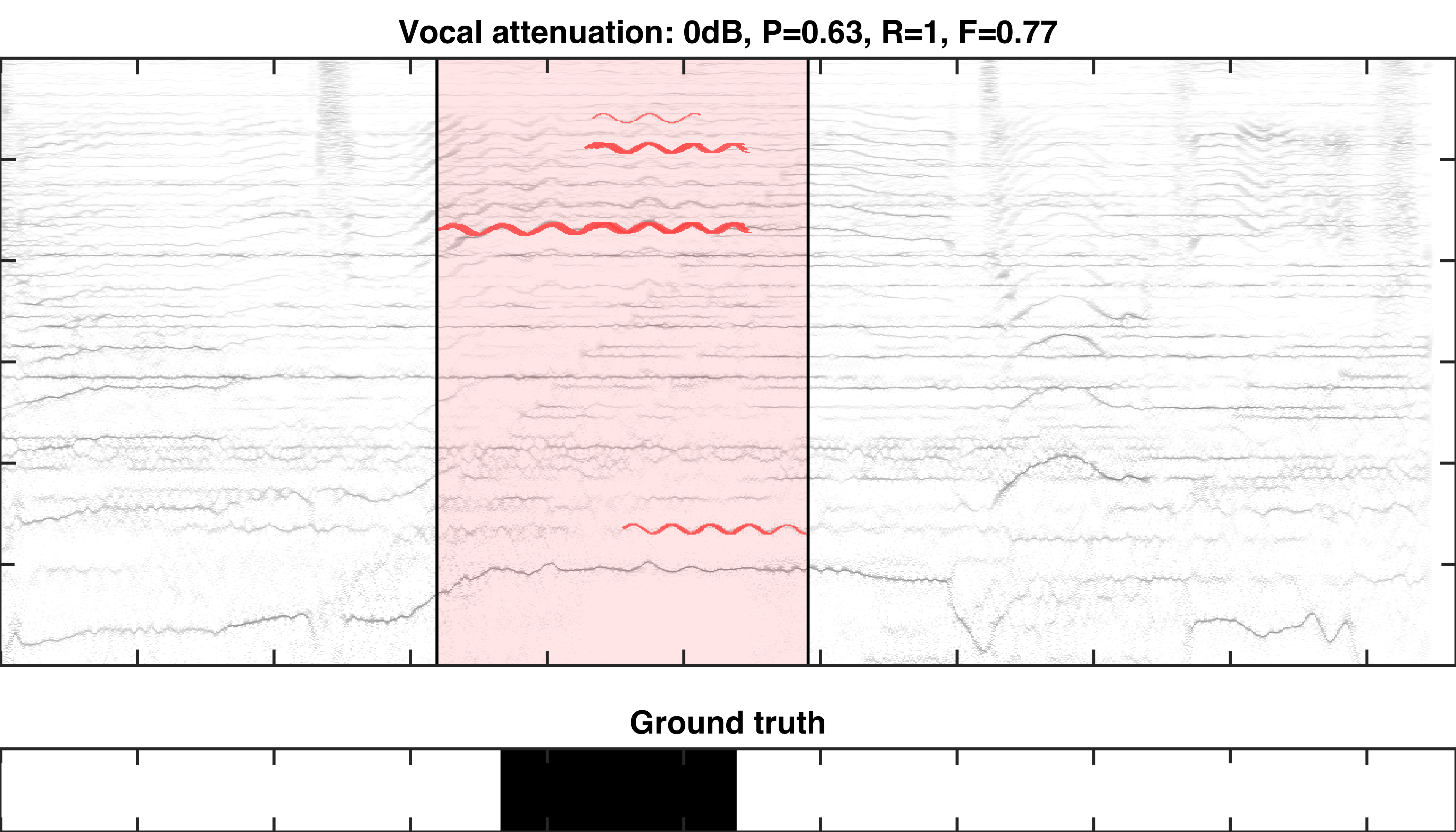
Example: Funny Valentines - Sleigh Ride
Click the button in the middle to activate the player.
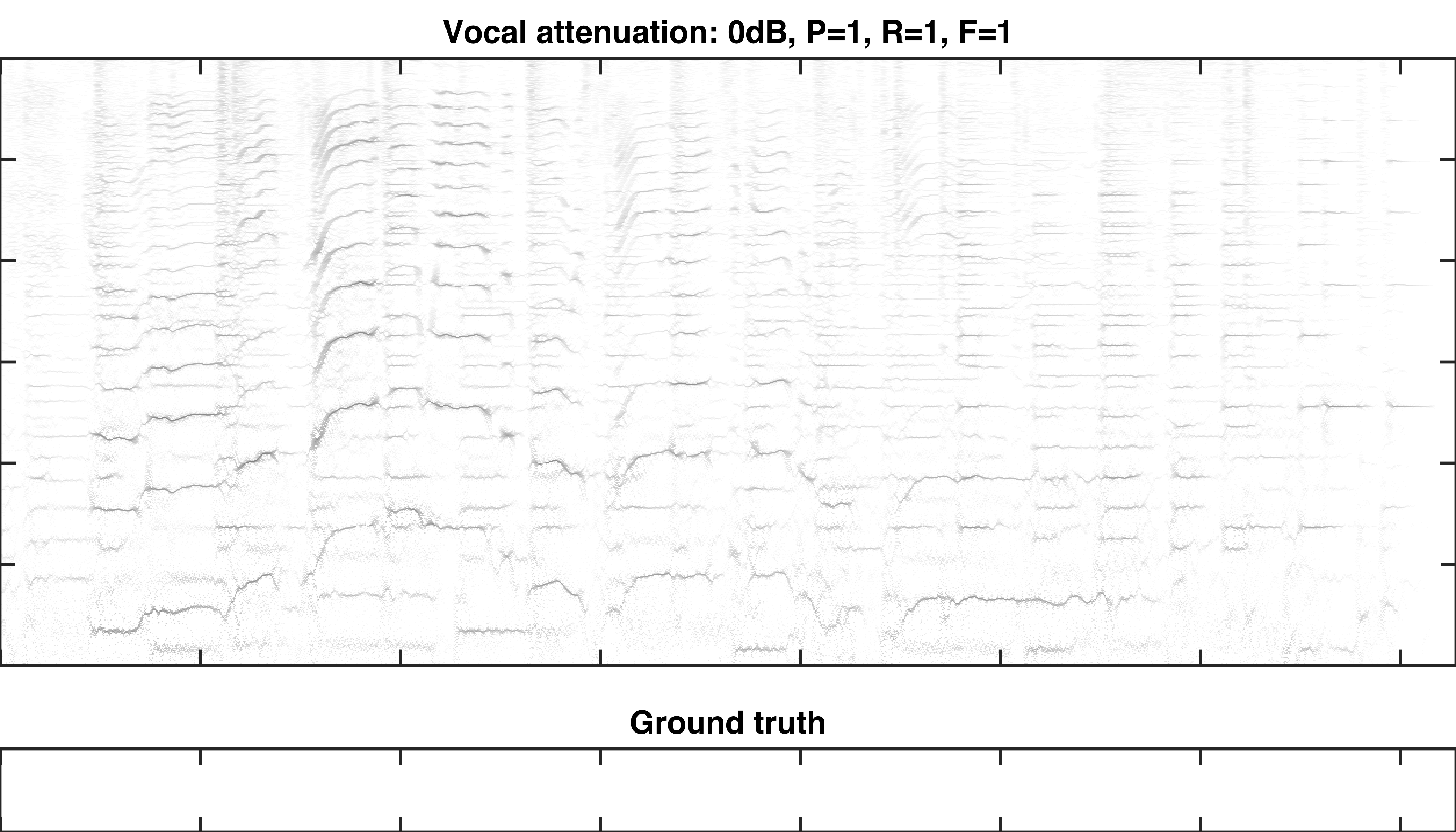
Evaluation: Vibrato Analysis
Click the button in the middle to activate the player.
